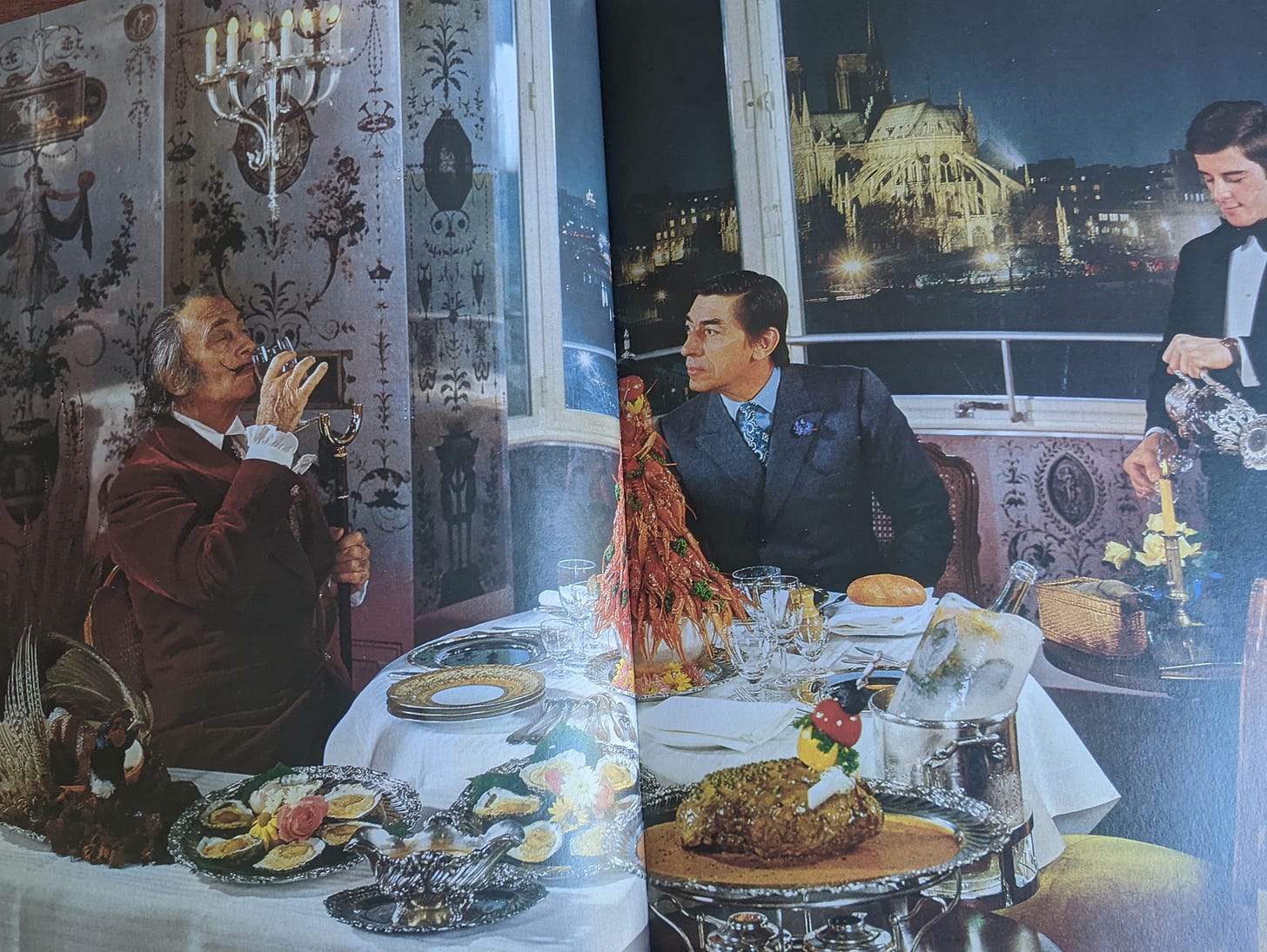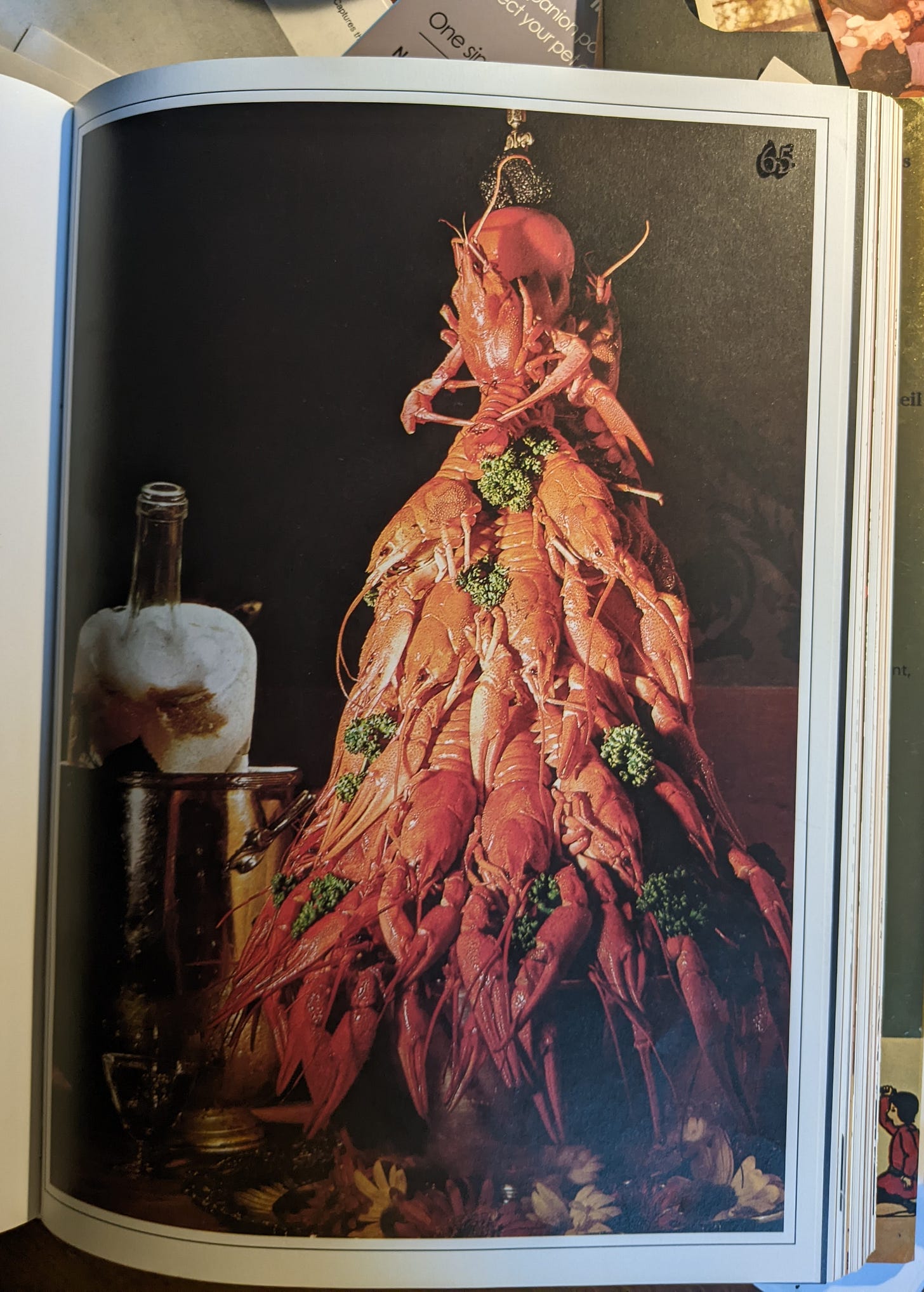Saturday News Digest, V1/E26
Table of Content
Synchronicity
New Favorite Way to Procrastinate
Synchronicity
"Oh, brother!"A prominent history professor at Columbia University thought he’d be very nice and have a dinner party at his large Manhattan house for his students on the last leg of their Ph.D. program. The students by this time in their education were beaten up by the pressure to excel. It could be said that they nipped at each other’s throats knowing they would be competing for the country’s few available faculty appointments. Ever present was their horror of the unbelievable debt they had fallen into. They could barely converse, especially around a professor whose future recommendation they would need to succeed. Most pertinent to a party atmosphere, they were by this point devoid of any sense of humor.
If you’ve never hung out with Ph.D. candidates then you cannot imagine how fraught such gatherings can be for a spouse with only a middling college undergraduate degree. Everyone there assumes you prefer comic books and romance novels—and not of the Jane Austen quality—to, say, Hanna Arendt’s Eichmann in Jerusalem. Mercifully, her husband had no intention of pursuing an academic career. He was thinking he’d go back to journalism. If anything, his humor had heightened in order to survive what he once thought was a good idea.
Nevertheless, he was not always cognizant of his spouse’s dilemma for, not only was she burdened with a crummy undergraduate education, she did not have an appropriately sanctioned job for a Ph.D. spouse who said she was a writer. That would be as an up-and-coming employee in one of the major or small-but-prestigious publishing houses or magazines. No, she worked at a tiny publication whose subject was food. She WROTE ABOUT FOOD! (Emphasis by the writer to represent the burned-in memory of the visibly disdainful attitudes that still annoys her to no end.) She was a tiny bit befriended by one student’s wife, a junior editor at Random House. Her sympathies rested on her burgeoning wine collection stored under her married student housing bed. The spouse enjoyed wine but, at gatherings such as the professor’s dinner, she preferred a hefty martini, specifically when made with the professor’s top shelf gin. As everyone knows, gin is a well-regarded treatment for mental fatigue.
Back to the dinner party. The professor’s imperious wife was a sculpture and mix-media artist of some renown. She also considered herself a cook, having taken personal classes with several renowned chefs. The menu is forgettable but her long table is not. At the center she had created a trench-like mound of dirt through which small multi-colored critters marched in single file toward a meadowed centerpiece. It turned out that the dirt was shaved chocolate, the critters composed of various fruits and vegetables, the centerpiece a carefully constructed melange of edible flowers and herbs. What an appreciative commotion this created! And how everyone did as they were told and, throughout the meal, demolished the trough and its little buggers.
The spouse took one look at the display, muttered, “oh, brother!” and drained her martini glass.
[More on the spouse’s martini history may be read here.]
This all came to mind a couple of weeks ago because of an article in The New York Times about artists sculpting in butter. As The Times article admits, food sculpturing has a long history, going back to Roman times, revived in the Middle Ages, and extending into the Victorian Era. Now it seems that artists and famous chefs are once more on the food art bandwagon. If The Times says that is noteworthy then attention must sort of be paid.

However, anyone who hangs out at state fairs can tell you this is no big deal. If enough fairs have been attended, then they have developed a high regard for the humble artists who spend weeks in a freezer to complete their masterpieces.
This could have been another “oh, brother” situation if it wasn’t for the oldest son putting his mother in her place. Upon hearing her rant about classism and pretensions, he reminded her of the Thanksgiving before the pandemic when they decided to produce their own piece of food art. It proved to be one of their most disorderly bonding kitchen experiences ever.

And then there was this: Last week a copy of Les Diners de Gala thumped down on the doorstep. Gala Dali, a noted cook and hostess at many lavish artist-packed meals was the wife of Salvadore. The book, conceived and put together by Dali, is filled with the kind of French haute cuisine dishes popular in the era and are accompanied by magnificently surreal illustration and graphic photos.
The opening photograph of Dali dining reminded her of the bag of crayfish she’d purchased months back on a reporting trip and were still in the freezer. Dali’s crayfish recipe, Bush of Crayfish in Viking Herbs, reads in full:
After giving us this recipe the chef decided that he wanted to keep the exact ingredients a secret. We present the recipe anyway for its reading pleasure.
In order to realize this dish it is necessary to have crayfish of 2 ozs each.
Prepare the following ingredients for a broth: “fumet” (scented reduced bouillon) of fish, of consomme, of white wine, vermouth, cognac, salt, pepper, sugar and dill (aromatic herb). Poach the crayfish in this broth for 20 minutes. Let it all cool for 24 hours and arrange the crayfish in a dome. Strain the broth and serve in cups.
This is a closer look at the dish:
The crayfish went back into the freezer. The book found an honored spot in the bookcase. The son was not allowed to see the recipe for fear he would hound his mother to make it which would bring on another “oh, brother!” moment.
For your artistic pleasure, watch a video from The New York Times on how the artist Seua makes her little butter sculptures. It’s fun.
New Favorite Way to Procrastinate It's pretty addictive
I don’t know when I signed up to receive the Urban Archive Weekly newsletter but it has now become my most comfortable time-out chair. This link will take you to the home page where you can type in locations around the country. Once there, you may choose different ways to receive content—everything from photos to audio. The content is dependent on uploads from users but there’s plenty there now for you to lose a considerable amount of your day.




